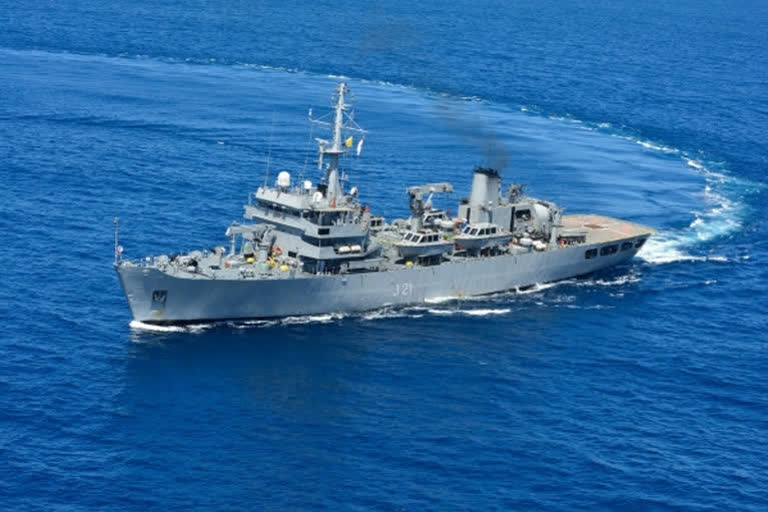New Delhi:With a considerable increase in the deployment of its warships in the Indian Ocean Region (IOR), the Indian Navy is providing strategic support to its fellow services in the ongoing activities related to the border tensions with China.
The Indian Navy said to have increased deployment of warships in the IOR since the border tensions with China began, government officials said, adding some estimates indicate that the increase is almost 25 per cent.
Also read:Army chief visits Central Command HQ; meets UP Guv, CM
The officials said that past 100 days have seen the Indian Navy operating from Ladakh (with its P-8I surveillance aircraft) in the north to Mauritius, 7,000 km to the south, and from the Red Sea in the west to the Malacca Strait in the east, a distance of nearly 8,000 km.
Indian Navy deploys ships on Mission-Based Deployments at key locations in the IOR so as to build a comprehensive maritime picture and respond to developing situations.
At any time, there are warships patrolling the Bay of Bengal, the Malacca Straits, the Andaman Sea, the southern and the central Indian Ocean Region, the Gulf of Aden and the Persian Gulf.
Additionally, following maritime security incidents, a combat-ready warship has also been deployed on Operation Sankalp since June 2019 for protection of Indian merchant vessels passing through the Persian Gulf.
"Being a network-enabled force, the Navy maintains total awareness of the IOR by using the IFC-IOR (Information Fusion Centre-Indian Ocean Region), ships on Mission-Based Deployments, P-8I and Dornier surveillance aircraft and other high-end surveillance tools," a senior government official said.
Near-coast surveillance is also coordinated by the Indian Navy by coordinating the resources of nearly 20 government agencies to draw an electronic fence over our coastline, to deter any 26/11-type incident.
After Chinese People Liberation Army's activities in eastern Ladakh increased in the months of May and June, culminating in June 15 clashes in which 20 Indian soldiers were killed, the chiefs of the Indian Army, Navy and Air Force are meeting on a daily basis to coordinate the joint response.
Since then, the Indian Navy has been at the forefront of strategic signalling to the Chinese forces.
The signing of the Mutual Logistics Support Agreement in June with Australia gave the Indian Navy access to the strategically located Cocos and Keeling Islands in the southern Indian Ocean, which will enable ships and aircraft to keep watch on Chinese Navy ships and submarines entering the Indian Ocean Region
